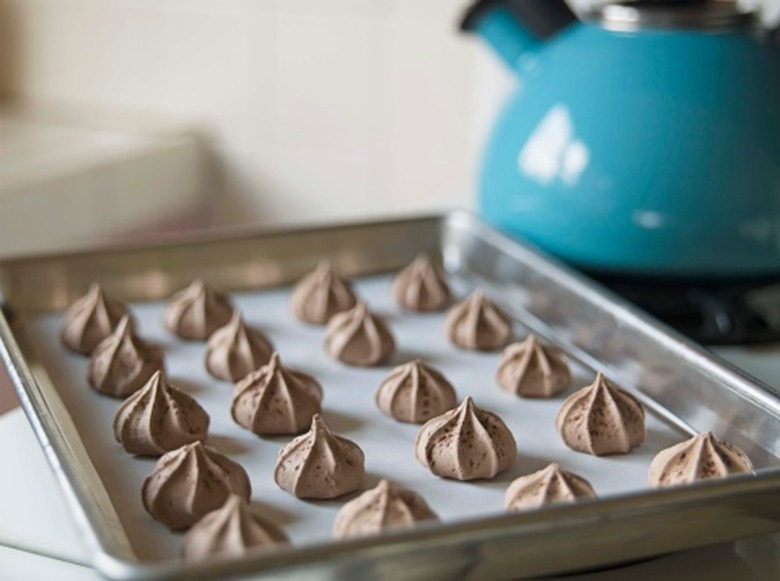Ideas For Cookie Science Fair Projects
Science fair projects are good opportunities for students to get creative and demonstrate what they have learned to teachers, parents and fellow students. If you're set on using cookies in your science fair project, you can choose from a variety of different projects that demonstrate the science in baking, developing recipes and gauging public preferences.
Cookie Mutants
You can use cookies to demonstrate mutations in DNA. Bake chocolate chip cookies using a standard recipe, and arrange them on a plate. Then, change a vital ingredient in the recipe, and bake some more cookies. Arrange these cookies on a second plate. Present both plates at the science fair, inviting people to guess how the cookies were different. Then reveal what you changed in the "mutant" recipe. You can also include a display board comparing the process to genetic mutations.
Baking Sheet Project
Baking Sheet Project
For this project, you will test if a baking sheet can affect if a cookie burns. Buy a few types of baking sheets made out of aluminum or steel. Also get some that are nonstick and some that aren't. Develop a hypothesis, and test the hypothesis by baking the exact same cookie recipe at the same temperature and for the same length of time on each baking sheet, recording your results for each. You can change the time or temperatures and conduct the test again to see if the results change.
The Perfect Cookie
This project involves making small changes in a cookie recipe to perfect the taste of the cookie. Take your favorite cookie recipe, and modify it in a few subtle ways, such as adding an extra egg or two or reducing the amount of chocolate chips. Cook a batch of each modified cookie, and arrange them on platters. Have a taste test to determine what type of cookie people like the best.
The Best Flour
The Best Flour
A similar project involves determining the public's preference for the flour in cookies. You can use white flour, whole wheat flour and whole spelt to make the cookies. Make a blind taste test after you have baked and set out the cookies. Test the cookies between specific age groups, such as 6 to 18 years, 18 to 35 years and over 35 years. Break down what age groups liked which type of flour.
Cite This Article
MLA
Taylor, Dan. "Ideas For Cookie Science Fair Projects" sciencing.com, https://www.sciencing.com/ideas-for-cookie-science-fair-projects-12748678/. 12 April 2011.
APA
Taylor, Dan. (2011, April 12). Ideas For Cookie Science Fair Projects. sciencing.com. Retrieved from https://www.sciencing.com/ideas-for-cookie-science-fair-projects-12748678/
Chicago
Taylor, Dan. Ideas For Cookie Science Fair Projects last modified August 30, 2022. https://www.sciencing.com/ideas-for-cookie-science-fair-projects-12748678/
